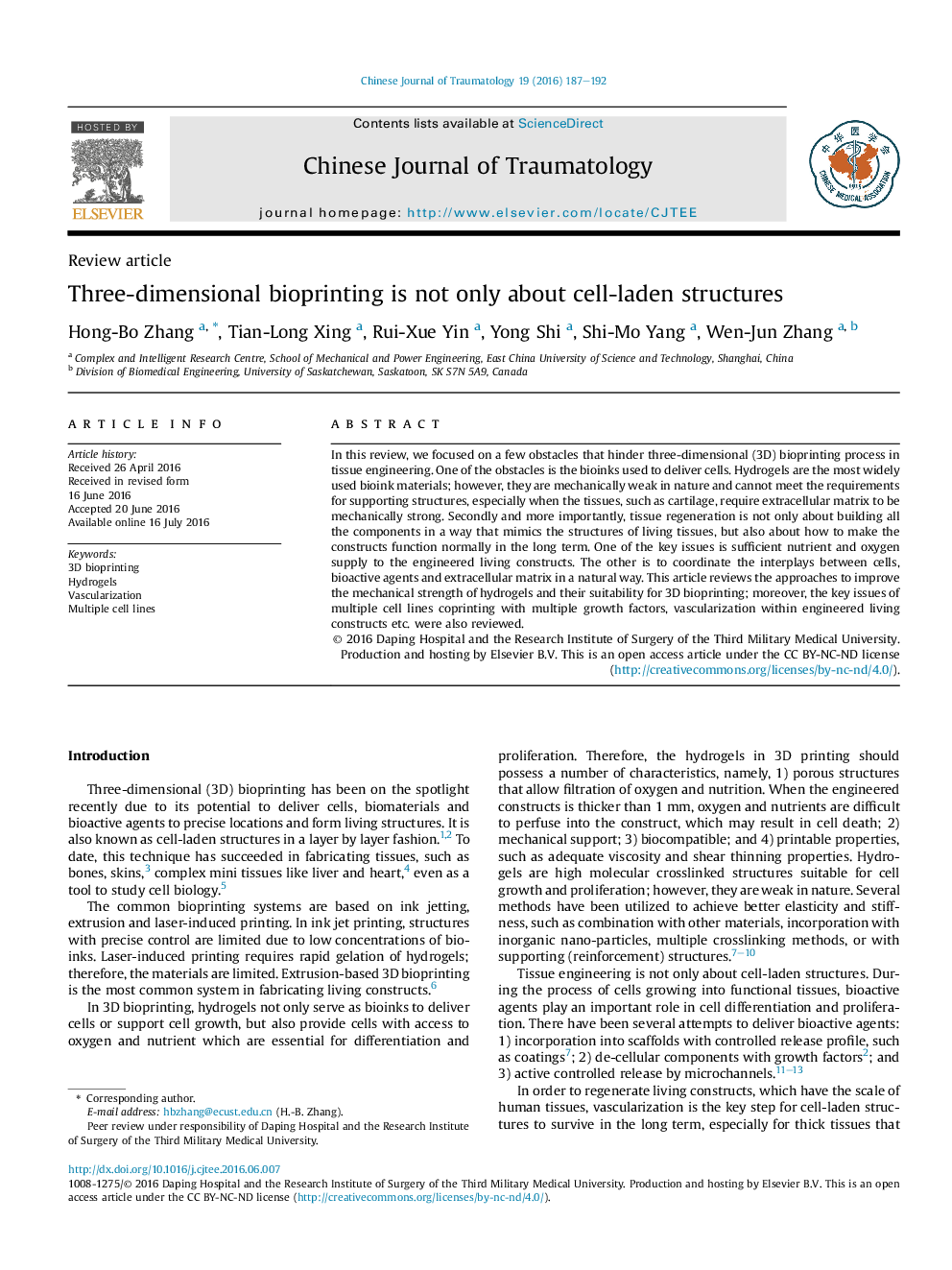| Article ID | Journal | Published Year | Pages | File Type |
|---|---|---|---|---|
| 3107050 | Chinese Journal of Traumatology | 2016 | 6 Pages |
In this review, we focused on a few obstacles that hinder three-dimensional (3D) bioprinting process in tissue engineering. One of the obstacles is the bioinks used to deliver cells. Hydrogels are the most widely used bioink materials; however, they are mechanically weak in nature and cannot meet the requirements for supporting structures, especially when the tissues, such as cartilage, require extracellular matrix to be mechanically strong. Secondly and more importantly, tissue regeneration is not only about building all the components in a way that mimics the structures of living tissues, but also about how to make the constructs function normally in the long term. One of the key issues is sufficient nutrient and oxygen supply to the engineered living constructs. The other is to coordinate the interplays between cells, bioactive agents and extracellular matrix in a natural way. This article reviews the approaches to improve the mechanical strength of hydrogels and their suitability for 3D bioprinting; moreover, the key issues of multiple cell lines coprinting with multiple growth factors, vascularization within engineered living constructs etc. were also reviewed.
